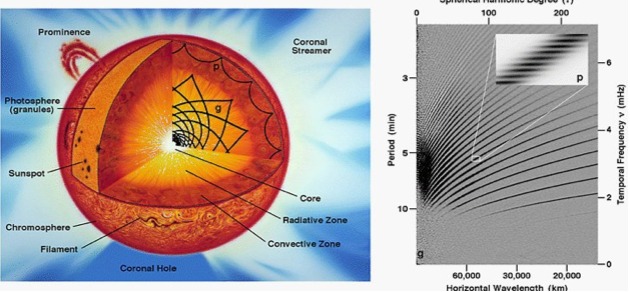
 |
Since different frequency oscillations can propagate in different solar "layers", we concentrate in analyzing the oscillations in just one of the layers. In this project, the major interest lays in the first two layers of the solar atmosphere, the photosphere and chromosphere. These layers are thought to be key in driving many coronal processes, as well as being the source of the energy necessary for the heating.
The solar surface can be, roughly, divided into active and quiet zones. Usually, the division is done using the solar magnetic field. The magnetic field is omnipresent in the outer layers of the Sun. Each region has slightly different oscillatory behavior.
The division between active and quiet Sun regions is rough and based mostly on low-resolution magnetograms of the Sun. And, basically, it goes like this: the areas that do not show any magnetic structures, just this omnipresent salt-pepper pattern are declared as the quiet Sun. The rest is the active Sun. So the active Sun contains sub-areas called: solar spots, bright-points, network; while quiet Sun is peaceful. In recent years various research has shown that there is more magnetic flux in the quiet Sun areas than previously thought. This current Solar cycle minimum and the New Solar Telescope (NST) with its resolution will allow us to see whether there are some active sub-areas in the quiet Sun as well. ( Detailed explanation )
In the quiet Sun the most prominent structure is granulation. The image shows the example of it. One bubble is approximately size of the Portugal. ( Detailed explanation )
The dark paths in the image are called intergranular lanes. In them the turbulent downflow of the plasma is relatively strong, so the observed transient, oscillation can be detected above them. ( Detailed explanation )
Those oscillations are thought to be involved in the supply of the energy necessary to heat the upper layers of the atmosphere. ( Detailed explanation )
The active parts of the Sun are also source of the oscillations; the most prominent one. Sunspots are known to host some of the most dynamic phenomena in the lower solar atmosphere. These include umbral flashes (UF), umbral oscillations, running penumbral waves and Evershed flows. ( Detailed explanation )
For the questions about this project contact: Dr. Aleksandra Andic